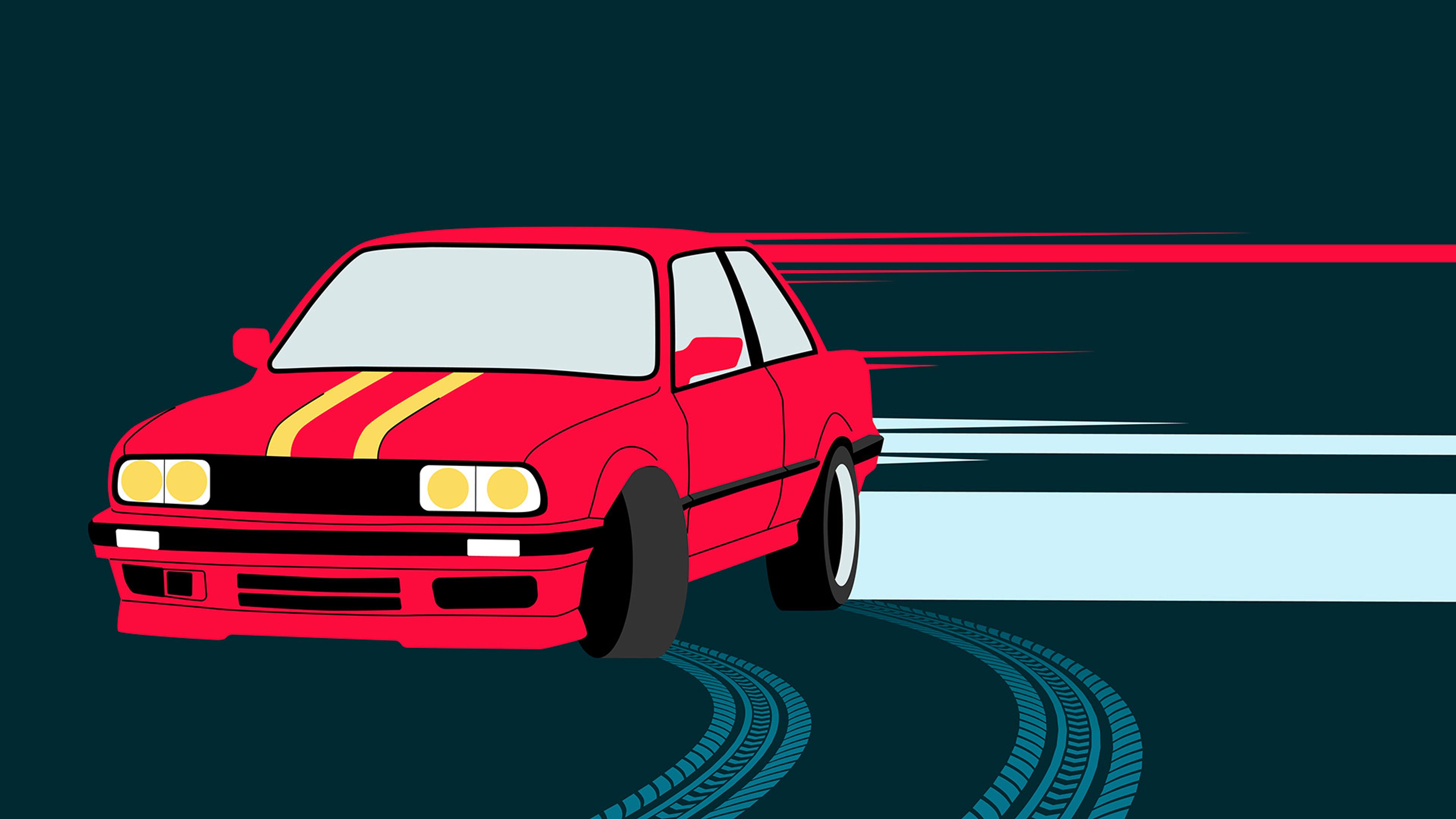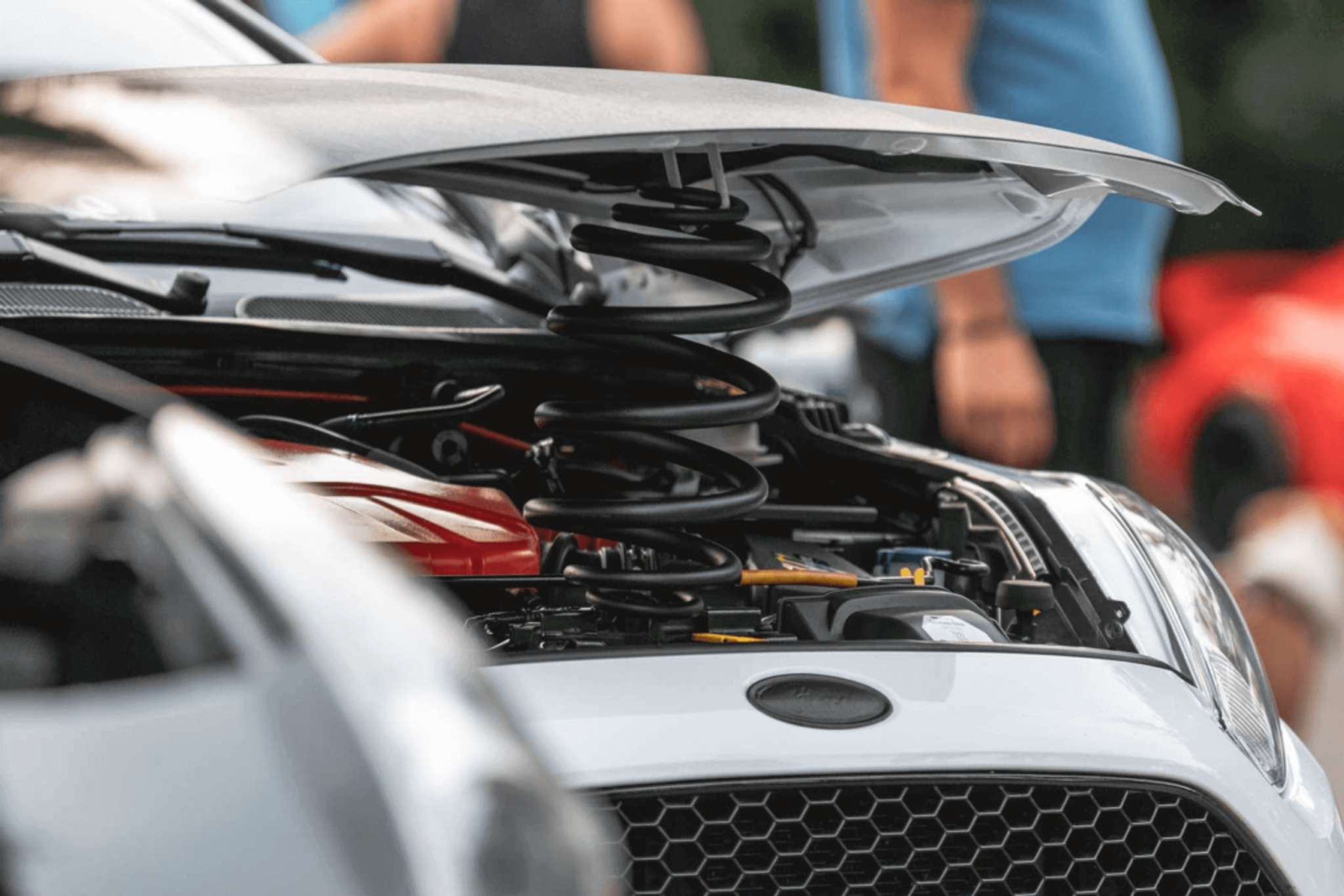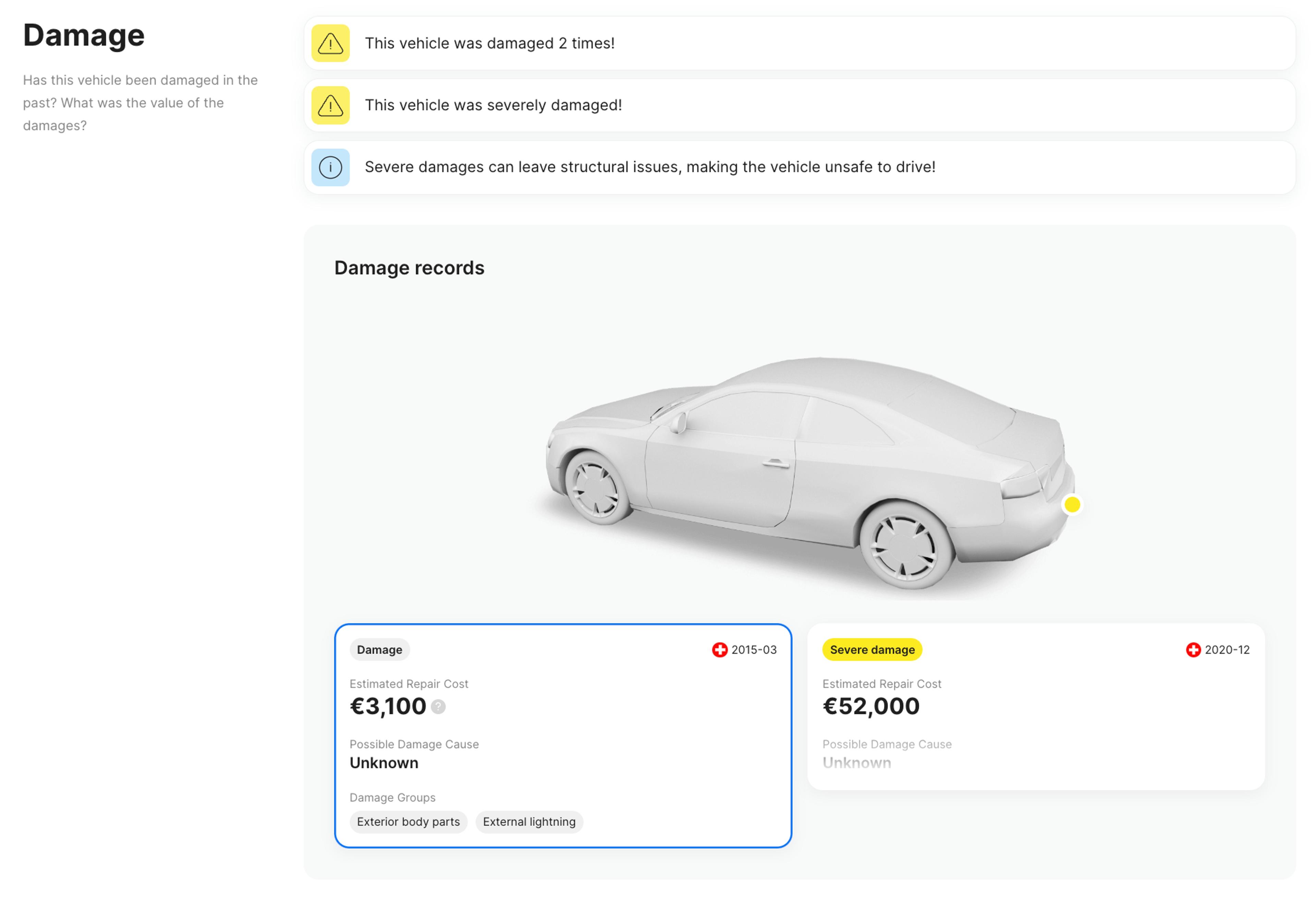
While vehicle factory settings may work for most drivers, have you ever wanted more power, better handling, or a unique look?
Car tuning is a popular way for car enthusiasts to customize their vehicles. Yet with numerous customization options available, it can be overwhelming for beginners to navigate the world of car tuning.
From engine tuning and suspension upgrades to brake tuning, our guide will explore various types of car tuning, highlighting popular methods and techniques used to achieve optimal results.

Looks can be deceiving!
Don't risk your safety - check it with carVertical first
What is car tuning and what does it do to a car?
Car tuning involves modifying a vehicle's appearance, performance, and functionality beyond its original factory standards, hopefully without sacrificing reliability.
With the help of vehicle customization, car owners can unlock the full potential of their cars and achieve their desired driving experience. Tuning a vehicle can result in better performance, improved fuel economy, and a more satisfying driving experience. Perhaps most importantly, tuning can really make a vehicle stand out from the crowd.
Popular types of car tuning

Whether you want to improve speed, handling, or fuel efficiency, there’s a tuning category for everyone.
Performance car tuning
Performance tuning is a specialized form of car customization, enhancing a vehicle's speed, acceleration, handling, and overall performance. This process involves modifying various components of a car, such as the engine, exhaust system, suspension, and drivetrain.
The ultimate objective is to optimize a car's capabilities for its intended purpose, whether that's racing, track driving, or simply making the driving experience on public roads more enjoyable.
Here are some common techniques:
- ECU remapping/chip tuning
- Installation of an aftermarket air intake
- Upgrading to an aftermarket exhaust system
- Turbocharging/supercharging
- Upgrading the suspension
- Upgrading the brakes
- Lightweight wheel and tire upgrades
- Installing limited slip differentials
- Upgrading to a high-performance clutch and flywheel
Suspension tuning

Suspension tuning involves upgrading and adjusting a car's suspension system to improve comfort or handling. Popular modifications include coilovers, sway bars, strut braces, and adjustable shocks.
Aftermarket suspension parts can reduce body roll and improve cornering. Most car enthusiasts buy new suspension components to improve their vehicle's abilities in high-performance situations.

Air suspension and air ride systems
Air suspension systems allow you to adjust the ride height and improve ride comfort. They’re typically more adjustable than traditional systems, allowing greater customization and fine-tuning of a vehicle's handling characteristics.
Among the disadvantages, air suspension systems can be more complex and expensive, requiring more maintenance. The airbags can be punctured or damaged, and the air compressor and other components can wear out over time.
Suspension bearings
One common approach to tuning suspension bearings is using stiffer or more durable materials, such as polyurethane or Delrin (polyoxymethylene). These materials can help to reduce flex and improve the responsiveness of the suspension system.
Another approach to tuning suspension bearings is adjusting the preload or tension on the bearings, improving the suspension's ability to absorb shocks and vibrations.
Sports suspension
The goal of sports suspension tuning is to provide a more precise and controlled ride, reduce body roll during cornering, and improve a vehicle's overall responsiveness and agility.
Some of the performance parts of sports suspension tuning include:
- Upgrading to stiffer springs can help reduce body roll and improve a vehicle's handling. Lowering the ride height with shorter springs can also lower the center of gravity, further improving handling.
- High-performance shock absorbers are often used in sports suspension tuning to provide better damping and improved responsiveness.
- Upgraded sway bars can help reduce body roll and improve a car’s handling during cornering.
- Proper alignment is critical for sports suspension tuning, affecting a vehicle's handling, steering, and tire wear. Camber, caster, and toe are key alignment settings that can be adjusted to improve handling and performance.
- Choosing high-performance tires, made using a stickier compound and offering a wider contact patch, can improve grip and handling.
Drivetrain car tuning
The process of drivetrain tuning entails making adjustments to a vehicle's transmission, clutch, and driveline elements to enhance its acceleration, grip, and overall functionality.
- Upgrading the clutch. A high-performance clutch transfers power to the wheels more efficiently and improves acceleration.
- Installing a limited-slip differential. A limited-slip differential distributes power to the wheels more evenly, improving traction and reducing wheel spin.
- Replacing the flywheel. A lightweight flywheel reduces rotational mass and improves throttle response.
- Upgrading the driveshaft. A high-performance driveshaft reduces power loss and improves acceleration.
- Upgrading the transmission. Installing a short-throw shifter, upgrading gears, or installing a shift kit can improve shifting performance and reduce shift time.
Engine tuning

Engine tuning is a complex process that involves modifying the engine's mechanical and electronic components to optimize performance. Additionally, engine tuning may include upgrades to the engine's internal components, such as camshafts, pistons, and connecting rods, to improve strength and durability. Popular engine tuning modifications include:
- ECU remapping. Modifying a car's engine control unit (ECU) helps to improve power and performance. ECU remapping can also improve throttle response, horsepower, and fuel efficiency.
- Chip tuning. Replacing a car's stock chip with an aftermarket chip can improve the air/fuel ratio, ignition timing, and other engine parameters. Chip tuning can also boost engine power, acceleration, and fuel efficiency.
- Air intake upgrade. Upgrading a car's air intake system allows more airflow into the engine, improving horsepower and acceleration.
- Turbocharging/supercharging. Adding a turbocharger or supercharger to the engine can significantly increase horsepower and torque output. However, this more complex modification requires significant mechanical knowledge and expertise.
Engine tuning can involve a range of modifications, from simple adjustments to the engine's computer software (known as ECU remapping) to more complex modifications, such as upgrading the turbocharger or other components.
Expanding cylinder capacity
One way to increase the engine's performance is to expand its cylinder capacity, which means increasing the size of the engine's cylinders to allow more fuel and air to be burned during each combustion cycle.
Expanding cylinder capacity can be done in several ways, including:
- Boring a cylinder involves removing some of the metal from the inside of the cylinder's walls to increase their diameter.
- Stroking the engine involves increasing the length of the engine pistons' stroke, which increases the total volume of a cylinder.
Increasing engine power
Increasing an engine's horsepower output can be done through a variety of methods, including:
- Using a turbocharger or supercharger to force more air into the engine's combustion chamber, allowing more fuel to be burned.
- Adjusting various engine components, such as fuel and air delivery systems, ignition timing, and the exhaust system.
- Replacing certain engine parts with higher-performance components, such as high-performance camshafts, intake manifolds, and performance chips.
- Installing a larger radiator prevents the engine from overheating and allows it to produce more power.
ECU remapping
The ECU is the engine's brain, controlling various processes, such as fuel and air delivery, ignition timing, boost pressure, and throttle response. Modifying the ECU can improve the engine's power output, torque, fuel consumption, and other characteristics.
ECU remapping involves connecting a computer to the engine's control unit and modifying its software. It can be done in various ways, including through a physical chip replacement or a software download onto the existing ECU. However, it's important to note that ECU remapping poses risks such as engine damage if not done correctly.
Body tuning

Car body tuning is an integral part of tuning culture, where car enthusiasts explore every possible area of a vehicle's body to customize its appearance.
Rims and tires
Rims and tires are an essential part of car tuning and customization. While tires are the only part of a car that comes in contact with the road, rims hold the tires in place and contribute to a vehicle's overall appearance.
Performance tires are designed to provide better traction and handling, especially during high-speed driving or cornering. They typically have a softer rubber compound and wider tread grooves than regular tires. Upgrading to high-performance tires can significantly improve a car's acceleration, braking, and handling.
Custom rims can also enhance a car's appearance and performance. Rims come in various sizes, designs, and materials, from classic steel wheels to high-performance forged aluminum wheels. They can also be customized with unique finishes, such as painted, polished, or chrome-plated, and have different spoke designs like mesh or multi-spoke.
Choosing lighter and more aerodynamic rims reduces a car's overall weight, improving its fuel economy.
Coilovers
The adaptability of coilovers is one of their key benefits. The ride height may be easily adjusted by raising or lowering the shock absorber's threaded collar. This enables a driver to alter a car's height for better handling and aerodynamics or to achieve a more aggressive stance.
The damping and rebound settings can also be adjusted, improving a car's handling and overall ride quality. Changing these settings allows drivers to fine-tune the suspension to their driving style or road conditions.
Strut mounts and struts
Strut mounts and struts are components of a car's suspension system that work together to provide a smooth and stable ride. The strut mount is a rubber or metal piece connecting the strut to a car's frame, while the strut is a shock absorber connecting the wheel to a vehicle's structure.
Both strut mounts and struts can be upgraded or modified to improve a vehicle's handling and performance. Upgrading to stiffer or adjustable strut mounts can reduce body roll and enhance steering response. Similarly, upgrading to performance struts can help to reduce body movement and improve cornering ability.
However, it's important to note that these modifications can also affect ride comfort and noise levels, requiring additional adjustments to other suspension components.
Lowrider tuning
A lowrider is a type of car modified to have a lowered ride height, often to the point where a vehicle is almost scraping the ground.
Lowriders are typically classic American cars from the 40s, 50s, and 60s. Vehicles are modified to have a hydraulic suspension system to control the ride height and create different visual effects. Some lowriders have multiple hydraulic pumps that enable a car to dance or bounce up and down or side to side.
Lowriders often feature custom paint jobs, chrome or gold-plated accessories, and customized interiors, including plush seats and steering wheels.
Light tuning
Light tuning for headlights includes upgrading to more efficient bulbs or installing LED or HID lighting systems that provide brighter and more focused beams of light. Other light tuning modifications may include adding light bars or accent lighting to a vehicle's exterior, enhancing its appearance.
You can also install LED lights in the interior or exterior of a car, such as ambient lighting. These modifications enhance a vehicle's appearance and create a more personalized and unique look.
Lighting tone, shape, and brightness
The tone, shape, and brightness of a vehicle's lighting can significantly impact its appearance and visibility.
The tone of a car's lighting refers to the color temperature of the light. A warmer tone, such as yellow or amber, can provide a more traditional and classic look, while cooler tones like bright white or blue color can provide a more modern and high-tech appearance. The choice of tone can also impact visibility, with cooler tones providing better visibility in dark or low-light conditions.
Furthermore, the shape of a vehicle's lighting can also impact its appearance and style. It can range from traditional round or square headlights to more modern and angular shapes.
Set a tuning goal

Setting a tuning goal is an essential step in the tuning process. Whether you're looking to increase horsepower, improve fuel efficiency, or enhance your vehicle’s handling, having a specific goal in mind will help you determine which modifications to make and how to prioritize them.
Consider factors, such as your budget, driving style, and intended use of a vehicle. By setting a clear tuning goal, you can achieve the desired results.
Not only race cars need tuning

Car tuning is often associated with high-performance sports cars and race vehicles, but this is less and less the case.
Tuning services today are more accessible to a broader range of vehicles, meaning that various companies help improve the driving experience and personalize a car to the owner's preferences.
How to improve driving experience with car tuning
Car tuning can help improve the driving experience by making a car more responsive, comfortable, and enjoyable to drive. Here’s how tuning can improve your driving experience:
- Tuning the engine, suspension, and other components can improve a car's performance, giving it better acceleration. Also, it can make a vehicle more fun and exciting to drive.
- A car's functionality could be improved by upgrading the interior with better seats, sound systems, and other amenities.
- Tuning can make a car more personalized and reflective of the owner's style. Custom paint jobs, rims, and body kits can give your car a unique appearance.
How to make your car stand out in a crowd
A unique paint job or vinyl wrap are popular ways to customize the exterior of a car. You can add custom colors, graphics, or patterns depending on your style. Also, it's possible to add custom body kits or aerodynamic features to give your car a more aggressive look.
Another option is to upgrade the wheels and tires on your car. Upgraded rims can give your vehicle a more unique and stylish appearance, while performance tires can improve handling and traction. You can also consider adding suspension modifications, such as coilovers or lowering springs, to give your car a more aggressive stance.
Know your tuner
Knowing your tuner is essential to ensure that your car tuning experience is positive and successful. You should research and choose a tuner with a solid reputation for quality work, customer service, and fair pricing.
Verifying that a tuner is appropriately certified and experienced with your vehicle's make and model is also important. A good tuner will take the time to listen to your goals and preferences and work with you to develop a customized tuning plan to meet your needs and budget. Additionally, they should be willing to answer your questions and provide ongoing support and maintenance as needed.
Why to choose certified tuning companies?
A certified workshop offers several benefits over DIY tuning or uncertified services, including:
- Expertise. Certified companies have knowledge, skills, and experience to perform safe and effective tuning modifications.
- Quality parts. Certified companies use high-quality parts designed and tested for a car's make and model.
- Warranty protection. Tuning modifications performed by certified companies may be covered under warranty, providing added security and peace of mind.
- Compliance. Certified workshops ensure that all modifications comply with local laws and regulations, reducing the risk of legal issues or penalties.
Most famous car tuning companies
Many famous car tuners and tuning companies have made a name for themselves in the automotive industry. Here are some of the most well-known and respected tuners:
- AC Schnitzer. A German-based tuner, specializing in BMW vehicles and known for their high-quality performance upgrades and cosmetic enhancements.
- Alpina. A German-based tuner, focusing on BMW cars, particularly high-performance luxury models.
- Brabus. A German-based tuner, specializing in Mercedes-Benz vehicles and known for their powerful engine upgrades and luxury interior modifications. The famous example are BRABUS and AMG companies, which both provide tuning for specific car brands. For example BRABUS tunes luxury cars like Mercedes-Benz, Porsche, or Rolls-Royce. It also has a partnership with Smart.
- Hennessey Performance. A US-based tuner, focusing on muscle cars and offering high-performance upgrades for vehicles like the Chevrolet Camaro, Ford Mustang, and Dodge Challenger.
- Liberty Walk. A Japanese-based tuner, specializing in exotic supercars and known for their comprehensive body kits and aggressive styling.
- Mansory. A German-based tuner, offering performance upgrades and luxury modifications for various vehicles, including brands like Ferrari, Lamborghini, Bentley, and Rolls-Royce.
- Novitec. A German-based tuner, offering high-performance engine upgrades and aerodynamic enhancements for Ferraris and Lamborghinis.
- Roush Performance. A US-based tuner focusing on Ford vehicles, particularly the Mustang and F-150, offering high-performance engine upgrades and suspension modifications.
- TechArt. A German-based tuner, offering engine upgrades, suspension modifications, and cosmetic enhancements of Porches.
- Vorsteiner. A US-based tuner, offering high-quality carbon fiber body kits and performance upgrades for luxury and exotic vehicles.
What's wrong with DIY car tuning?

DIY car tuning requires knowledge, experience, and specialized tools, which not all car owners possess. Improper tuning can also lead to decreased performance, increased wear and tear, and potentially dangerous driving conditions. However, DIY tuning also has a few benefits:
- It's cheaper. DIY tuning means only paying for the materials, which will make it less costly.
- More control. By doing the tuning yourself, you have greater control over the process and can make adjustments as needed without relying on a third-party tuner.
- Learning experience. DIY tuning can be a valuable learning experience, allowing you to develop new skills and gain a deeper understanding of your car's performance.
- Convenience. With DIY tuning, you have the convenience of being able to work on your car whenever and wherever you want.
Does tuning increase or decrease the vehicle's value?
While some may question whether tuning is worth it, when executed properly, it can greatly enhance a car's value and desirability.
Can auto tuning make a car lose its value?
Excessive or poorly executed modifications can sometimes lower a car's resale value. Here are a few examples of how poorly executed tuning modifications can negatively impact a car's resale value:
- Mechanical problems. Over-tuning or installing aftermarket parts can cause mechanical issues that may reduce a car's reliability and lifespan.
- Warranty issues. Some modifications may void a car's factory warranty, which can affect its resale value.
- Customization limits. Modifications, such as engine swaps, roll cages, or body kits, may limit the potential pool of buyers interested in a car.
- Non-compliance. Certain modifications may violate local laws and regulations, which can reduce a car's value and make it harder to sell.
By enhancing a car's performance and aesthetics, quality tuning can also increase its value:
- Improved performance. Tuning can enhance a car's acceleration, handling, and braking, making it more attractive to potential buyers.
- Unique features. Custom paint, rims, or other modifications can make a car stand out and increase its appeal.
- Higher quality parts. Upgraded parts made from high-quality materials may increase a car's longevity and reliability.
- Increased rarity. Limited-edition or rare models that have been tastefully tuned may command a higher resale value.
Check a tuned car’s condition before buying
Numerous advantages and the image of the seller, who made all the necessary modifications by himself, might suggest that you're looking at the perfect candidate to fill your driveway. However, do not let your guard down, as modified cars come with an additional set of risks.
As with any other car, it's crucial to assess its condition, focusing on the areas that were modified, and cross-examining it with the original specifications in the detailed carVertical report. Comparing the modifications to the original factory specifications helps determine the extent of changes made to the car. This insight can help you identify potential risks and understand if the modifications were done professionally and within safe limits.

Furthermore, carVertical vehicle history reports offer additional valuable information. You can learn about odometer readings to verify the car's mileage, identify potential title issues or check it has been in an accident.

All these aspects contribute to a comprehensive assessment of the car's overall condition and its value on the market.

Check your registration number
Avoid costly problems by checking a vehicle's history. Get a report instantly!
Is it expensive to tune your car?
Car tuning costs can vary significantly and depend on various factors, including the extent and type of modifications desired, the make and model of a vehicle, and the cost of labor. Suppose you are on a tight budget and want to start with some modifications. You can begin with relatively affordable upgrades, such as an aftermarket air filter, better brake pads, or even spark plugs that typically cost between $50 and $100.
If you want lowered suspension or a significant improvement in engine performance, be prepared to allocate at least $500 for the necessary modifications.
Extensive engine or body modifications can cost thousands of dollars.
Frequently asked questions

Article by
Evaldas Zabitis
Evaldas has been writing since middle school and has had a passion for cars for as long as he can remember. Right after getting his driver’s license, he spent all of his savings on shoddy cars so he could spend time fixing, driving, and selling them. Evaldas is always interested in automotive technical innovations and is an active participant in automotive community discussions.
